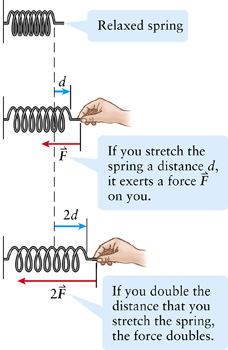Chapter 1. Direct and inverse proportions
3.1 Introducing proportionality
Often quantities found in equations can be related to each other in a straightforward way. We can write simple relationships between these quantities to make solving problems a little easier.
For example, take the equation for average velocity,
Vav=dt
The average velocity is calculated as the distance travelled, d divided by the time taken, t.
If the time taken is kept fixed, but I travel at a higher velocity, I will travel further (d is greater).
Notice that for a constant time interval, if I double V (travel twice as fast), the distance travelled will also double. We can say that the velocity is directly proportional to the distance travelled.
General Rules:
When we say variable quantities x and y are directly proportional, we mean that as x and y change, the ratio x/y is constant. To say that two quantities are proportional is to say that they are directly proportional. When we say variable quantities x and y are inversely proportional, we mean that as x and y change, the ratio xy is constant.
Relationships of direct and inverse proportion are common in physics.
Examples
- Objects moving at the same velocity v, have momenta p, directly proportional to their masses m. (p=mv).
- The ideal gas law (PV = nRT) states that pressure P is directly proportional to (absolute) temperature T, when volume V remains constant, and is inversely proportional to volume, when temperature remains constant.
- Ohm’s law (V = IR) states that the voltage V across a resistor is directly proportional to the electric current in the resistor when the resistance remains constant.
Try it Yourself 1
Test your understanding with these true/false questions
Question Sequence
Question 1.
In the equation, x = 4y, x is directly proportional to y.
| A. |
| B. |
3.2 Constants of proportionality
When two quantities are directly proportional, the two quantities are related by a constant of proportionality.
For example - If you are paid for working at a regular rate R in dollars per day, the money M you earn is directly proportional to the time, t you work.
- The rate R is the constant of proportionality that relates the money earned in dollars to the time worked t in days:
- You can write this relationship as an equation, M = Rt (Money earned = earning rate x time worked).
- If you earn $400 in 5 days, the value of R is $400(5 days) = $80/day.
Question Sequence
Question 5.
Calculate the amount of money earned in 8 days.
Sometimes the constant of proportionality can be ignored in proportion problems. Because the amount you earn in 8 days is 8/5 times what you earn in 5 days, this amount is
m8 days = 8days($400/5days) = $640
We will look at this idea more in the following section.
3.3 Writing proportionality relationships
In the simple equation, x = zy
If z is a constant, x is directly proportional to y.
This relationship can be written as
x∝y
If two quantities are directly proportional then calculating x/y will always comes out as the same value - provided there are no other non-constant variables in the equation.
This means we can write another relationship
x0/y0 = x1/y1
The following worked example will demonstrate how this can be useful.
Worked Example: Stretching a spring (Hooke’s law)

If you stretch a spring a distance d, it exerts a restoring force F on your hand. The force depends on how much you stretch the spring and this relationship is described by the equation,
F=-kd
- The force, F is directly proportional to the distance, d.
- This relationship can also be written as F∝d
- -k is the constant of proportionality
Question: If the spring is initially stretched by 2cm from its relaxed position, I measure a restoring force of 10N. Calculate what the restoring force would be if I instead stretched the spring by 6cm from its rest position.
Solution: To solve this problem you could first solve for k using d = 2cm and F = 10N, and then use the value to find the value of F for d = 6cm, but we will do it a different way.
Since
F = -kd and –k is a constant, F∝d
This means I can use the rule, F/d is a constant
We can write a new expression
F0/d0 = F1/d1
Where F0 and d0 represent the numerical values for the initial stretch and F1 and d1 represent the values for the second stretch.
Rearranging this expression gives,
F1 = F0d1/d0
Now you can solve for F1
F1 = 10N(6cm)/2cm = 30N
Notice that using this method we did not calculate a value for k, it was not needed to solve the problem.
Try it Yourself 2
Accelerating motion can be described by the equation F = ma where an acceleration, a results from an applied force, F on an object of mass m.

Question Sequence
Question 6.
A 1000kg moving car applies the brakes and slows down at a rate of -5m/s2. If a larger truck with a mass of 3000kg applies the same braking force, calculate its rate of deceleration. To practice proportionality try to find the solution without calculating the breaking force.
P’Cast: Painting Cubes
Try it Yourself 3
Question Sequence
Question 7.
The potential energy, U stored in a stretched spring is given by the equation,
U = ½kd2
where k is the spring constant.
If I stretch the spring initially by d = 2cm, 25J of energy is stored. Use proportionality to calculate the energy stored if the spring is then stretched by 4cm. (You can use the symbols U0 and d0 to represent the initial case and U1and d1 to represent the second case.)